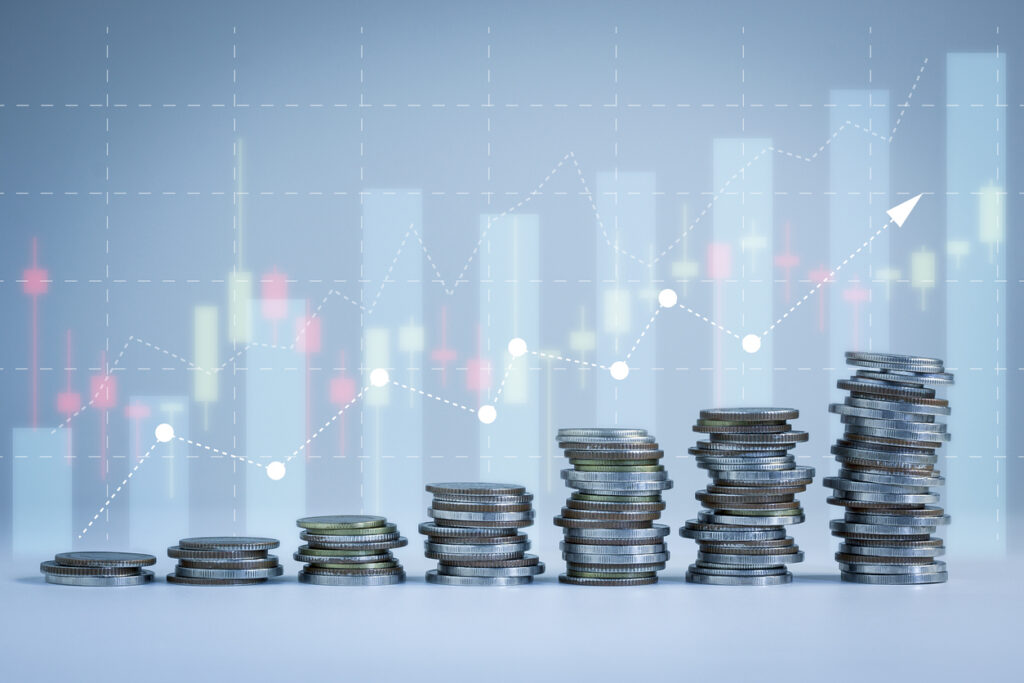As advisors and as investors, we tend to focus a lot on the ups and downs of the market and on the value of various stocks, ETFs and the like. The two broad approaches here are investing in growth stocks, companies that are expected to outperform the overall market because of their future potential, and value stocks, which are companies believed to be trading below what they’re really worth. Both of these strategies, or a combination of the two, are evaluated based on an investor’s time horizon and risk.
But, while these two strategies tend to get the most attention, there’s a third option that often gets overlooked. That’s income investing. Income investments, both equities and bonds, offer monthly or quarterly dividends or yields that provide investors with regular income that can have the effect of stabilizing a portfolio and the daily ups and downs in the market.
Two kinds of income investments
The first kind of equity investing is in stocks that pay regular dividends, usually monthly or quarterly. Equity investments of $1,000,000 might provide a 6% annual yield (keep in mind that yields vary widely among companies and can be raised or reduced at any time), which would amount to $60,000 a year or $5,000 in dividends each month. Depending on where these income investments are held, they could be taxed (in a Non-Registered account), tax-free (in a TFSA) or tax-deferred until you retire (in an RRSP). Even when dividends are taxed, the tax rate is much more favourable — about a third — compared to interest income, for example from a GIC or high interest savings account.
A second kind of equity investment is in the form of bonds, which also pay annual yields until they reach maturity. Bond yields, if they’re held in a taxable Non-Registered account, for instance, are taxed at a higher rate than equity yields but bonds are generally more stable and lower-risk than equities, so there’s a trade-off to consider in terms of your risk tolerance.
When it comes to dividend income from equities, there’s also a question of what to do with the funds as they’re paid out to you. There are three main options:
- Use the dividends as income: This choice is more likely to be made by older investors who are at a stage of life where they are looking to supplement their day-to-day income or live off their investment income, without spending the principal from their investments. For instance, keeping with our example above, $1,000,000 invested in equities with a 6% dividend would provide $60,000 a year income, or $5,000 a month, some of which might be taxed depending on the type of account it’s held in.
- DRIP the income: DRIPs — or dividend reinvestment plans — purchase new shares of invested equities using monthly dividends of those same equities. This is a good idea if your goal for now is to accumulate wealth rather than live off of it. So, that $5,000 a month in dividends could be reinvested each month at whatever the share price happens to be, dollar cost averaging your investment over time. If the share price drops, the total value of your investment will drop too, but you’ll be able to buy additional shares at a lower price per share, increasing your number of shares and your monthly dividend over time.
- Invest in something else: Rather than using a DRIP, you may choose to manually invest your monthly dividend in a different investment. This may be a good idea if you and your advisor believe there are opportunities to be had in other areas of the market.
Be wary of chasing dividends
While income investing can be a valuable part of your overall investing strategy, it’s worth keeping in mind that, too often, investors chase high dividend yields without properly evaluating the risk profile of the company they’re investing in. In other words, a 6% annual yield might sound enticing but what if the value of the shares you purchase drops 30%? If you’re not planning on selling the shares for many years, you may be able to afford to wait until the share prices rises while collecting your regular income every month. But if you need those funds in the short term — for instance for a home purchase or an unforeseen expense — you could be forced to sell the investment at a loss.
These are all considerations we’re always happy to sit down with you and discuss. Feel free to reach out to us at any time.

